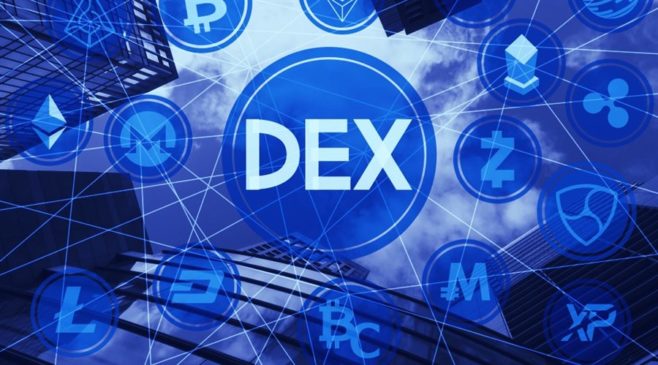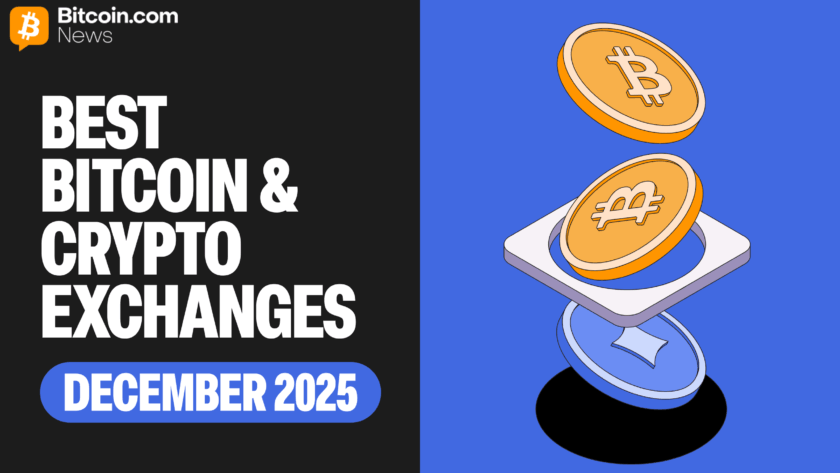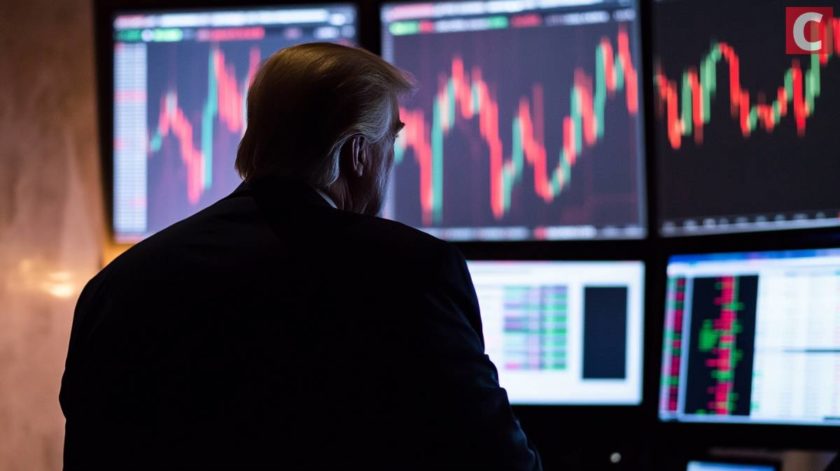In the past decade DEXs has been the main opponent of traditional banking as it is high tech and constantly improving on participants’ experience. With blockchain technology, decentralization has attracted many investors because of its speed, precisines, and cost effectiveness.
In the parallel world of traditional finance, the crypto currency market has its own “banks’’, DEXs that offer similar services such as buying, selling, and holding assets in exchange for fees. Decentralized exchanges are the ones responsible for transaction transparency and control over assets, without the presence of intermediaries.
The question we can ask ourselves is – How can we be sure that we are conducting safe transactions without traditional intermediaries? The answer is simple, thanks to smart contracts, every user can experience maximized security, complete privacy and of course lower fees. Smart contracts are paper free and they guarantee immediate execution. For investors ready to get involved in something new and exciting, the variety of assets is massive, including newly-launched tokens and projects.
Despite its benefits, the rise of DEXs did not go without any challenges for the market and investors. Hence, we composed a list that needs to be taken care of until the end of 2024 if the aim is the best outcome.
Look on 2023 Statistics
Based on statistics, decentralized exchanges have seen a decrease in trading volumes compared to its peak at $235 billion in November 2021. This trend is disproportionate to the rise of the crypto market, since a great improvement has been noted compared to 2022. However a ray of sunshine is around the corner, as it is expected that by the end of this year DEX’s trading volumes could go higher thanks to the April’s halving and Bitcoin (BTC) spot exchange-traded funds (ETFs) approvals in the US.
Key Challenges for DEXs in 2024
Liquidity Issues
One of the main concerns of every trading platform is keeping the liquidity ratio well balanced, as it is crucial for any exchange, determining how easily assets can be traded without significantly impacting their market value. Unlike CEXs, which maintain their liquidity pools, DEXs depend on individual liquidity providers.
Being constantly dependent can result in unstable trading conditions, with higher spreads, price volatility, and unfavorable trading environments, especially for lesser-known tokens and newly listed assets. To create more favorable trading conditions, DEXs must actively manage liquidity and incentivize liquidity providers to ensure sufficient depth for all trading pairs.
Technical Difficulties and User Experience
Decentralized exchanges could be a bit difficult to navigate, as they are perfect for tech savvy investors, and those who are not ready to accept modern user interfaces might switch back to CEXs, because of their simplicity and user friendly conditions. This set back has an impact on DEXs overall growth.
This year as well as the previous ones, DEXs must not slow down the progress and to keep up the work on developing additional features, in order to attract the traditional investors. Some of these features are derivatives, borrowing, lending, staking, and improved spot trading, and they must be taken seriously in consideration as they are the driving force when attracting participants.
Efficiency and Scalability
We do live in the era of constant digital evolution, and it might have millions of benefits, but we do witness a couple of disadvantages such as scams, hacks or regulatory issues. Immerse growth is usually accompanied by system failure, as the system’s capacity could not keep up with the demands. Issues like scalability are important to be taken care of, because they result in delayed transaction settlements, in periods of high volatility.
These types of problems are crucial for any user, as they might cost them money because of lack of speed. Being consistent under pressure is the top priority. Integrating layer-2 solutions can increase transaction throughput and reduce fees, with Proof-of-Stake (PoS) protocols offering promising solutions in this area.
Security Concerns
Decentralized exchanges are fully online processes and that makes them vulnerable to hacker attacks. The DeFi sector, including DEXs, is frequently targeted by hackers, leading to significant losses. In 2023 alone, crypto hacks resulted in $1.4 billion in losses, with $685 million lost in Q3. Working on software code could prevent security breaches and provide users security.
Regular audits, robust cybersecurity protocols, and thorough vulnerability testing are essential to prevent threats like these that not only result in financial losses but also erode investor trust and attract regulatory scrutiny.
Regulatory Challenges
Governments have been putting efforts in stopping DEXs operating in the gray area, and many regulatory challenges keep coming as decentralized exchanges are reporting growth. It is the perfect paradox, as users appreciate the privacy and anonymity offered by DEXs, while on the other hand governments seek to put an end to illegal activities like money laundering and terrorist financing. Regulatory clarity is essential for the industry, but approaches vary globally. Some jurisdictions, like Singapore and Hong Kong, are developing clear regulatory frameworks, while others remain ambiguous.
Conclusion
It is safe to say that decentralized exchanges are as important as CEXs as many investors are willing to use cryptocurrencies as main assets for investment, savings or any type of financial transactions. With great power comes great responsibilities, and that is why DEXs must focus on improving its weak spots. Addressing challenges is essential for continued acceptance and improved performance of DEXs.
Even though decentralized exchanges are far from perfect, working on minor setbacks could attract more users. In the end, the benefits do overrule the disadvantages, so our advice is to take advantage of what DEXs offer and enjoy the privacy, transaction fees and freedom they provide.
In the past decade DEXs has been the main opponent of traditional banking as it is high tech and constantly improving on participants’ experience. With blockchain technology, decentralization has attracted many investors because of its speed, precisines, and cost effectiveness.
In the parallel world of traditional finance, the crypto currency market has its own “banks’’, DEXs that offer similar services such as buying, selling, and holding assets in exchange for fees. Decentralized exchanges are the ones responsible for transaction transparency and control over assets, without the presence of intermediaries.
The question we can ask ourselves is – How can we be sure that we are conducting safe transactions without traditional intermediaries? The answer is simple, thanks to smart contracts, every user can experience maximized security, complete privacy and of course lower fees. Smart contracts are paper free and they guarantee immediate execution. For investors ready to get involved in something new and exciting, the variety of assets is massive, including newly-launched tokens and projects.
Despite its benefits, the rise of DEXs did not go without any challenges for the market and investors. Hence, we composed a list that needs to be taken care of until the end of 2024 if the aim is the best outcome.
Look on 2023 Statistics
Based on statistics, decentralized exchanges have seen a decrease in trading volumes compared to its peak at $235 billion in November 2021. This trend is disproportionate to the rise of the crypto market, since a great improvement has been noted compared to 2022. However a ray of sunshine is around the corner, as it is expected that by the end of this year DEX’s trading volumes could go higher thanks to the April’s halving and Bitcoin (BTC) spot exchange-traded funds (ETFs) approvals in the US.
Key Challenges for DEXs in 2024
Liquidity Issues
One of the main concerns of every trading platform is keeping the liquidity ratio well balanced, as it is crucial for any exchange, determining how easily assets can be traded without significantly impacting their market value. Unlike CEXs, which maintain their liquidity pools, DEXs depend on individual liquidity providers.
Being constantly dependent can result in unstable trading conditions, with higher spreads, price volatility, and unfavorable trading environments, especially for lesser-known tokens and newly listed assets. To create more favorable trading conditions, DEXs must actively manage liquidity and incentivize liquidity providers to ensure sufficient depth for all trading pairs.
Technical Difficulties and User Experience
Decentralized exchanges could be a bit difficult to navigate, as they are perfect for tech savvy investors, and those who are not ready to accept modern user interfaces might switch back to CEXs, because of their simplicity and user friendly conditions. This set back has an impact on DEXs overall growth.
This year as well as the previous ones, DEXs must not slow down the progress and to keep up the work on developing additional features, in order to attract the traditional investors. Some of these features are derivatives, borrowing, lending, staking, and improved spot trading, and they must be taken seriously in consideration as they are the driving force when attracting participants.
Efficiency and Scalability
We do live in the era of constant digital evolution, and it might have millions of benefits, but we do witness a couple of disadvantages such as scams, hacks or regulatory issues. Immerse growth is usually accompanied by system failure, as the system’s capacity could not keep up with the demands. Issues like scalability are important to be taken care of, because they result in delayed transaction settlements, in periods of high volatility.
These types of problems are crucial for any user, as they might cost them money because of lack of speed. Being consistent under pressure is the top priority. Integrating layer-2 solutions can increase transaction throughput and reduce fees, with Proof-of-Stake (PoS) protocols offering promising solutions in this area.
Security Concerns
Decentralized exchanges are fully online processes and that makes them vulnerable to hacker attacks. The DeFi sector, including DEXs, is frequently targeted by hackers, leading to significant losses. In 2023 alone, crypto hacks resulted in $1.4 billion in losses, with $685 million lost in Q3. Working on software code could prevent security breaches and provide users security.
Regular audits, robust cybersecurity protocols, and thorough vulnerability testing are essential to prevent threats like these that not only result in financial losses but also erode investor trust and attract regulatory scrutiny.
Regulatory Challenges
Governments have been putting efforts in stopping DEXs operating in the gray area, and many regulatory challenges keep coming as decentralized exchanges are reporting growth. It is the perfect paradox, as users appreciate the privacy and anonymity offered by DEXs, while on the other hand governments seek to put an end to illegal activities like money laundering and terrorist financing. Regulatory clarity is essential for the industry, but approaches vary globally. Some jurisdictions, like Singapore and Hong Kong, are developing clear regulatory frameworks, while others remain ambiguous.
Conclusion
It is safe to say that decentralized exchanges are as important as CEXs as many investors are willing to use cryptocurrencies as main assets for investment, savings or any type of financial transactions. With great power comes great responsibilities, and that is why DEXs must focus on improving its weak spots. Addressing challenges is essential for continued acceptance and improved performance of DEXs.
Even though decentralized exchanges are far from perfect, working on minor setbacks could attract more users. In the end, the benefits do overrule the disadvantages, so our advice is to take advantage of what DEXs offer and enjoy the privacy, transaction fees and freedom they provide.



